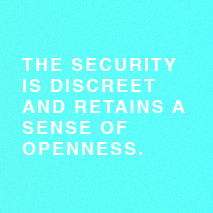Fujisawa Sustainable Smart Town near Tokyo is one of the first greenfield Smart Cities. Among its features are virtual fences to protect the residents.
They are a particularly common sight in South America: gated towns – areas surrounded by high walls, accessible only through security gates. Reminiscent of forts in Hollywood western movies, they offer their residents a high degree of security, but the pay-off is a sense of being shut-in. The Fujisawa Sustainable Smart Town near Tokyo takes a different approach: a smart approach. It has implemented the concept of the virtual gated town. The new-style security system aims to ensure a similarly high security level, but without enclosing the neighbourhood behind fences and gates.
Smart lifestyle for everyone
Fujisawa Sustainable Smart Town – Fujisawa SST for short – is a project that has been developed and built by the Panasonic Corporation in conjunction with eight partners. By 2018, some 3,000 people will be living and working in the neighbourhood. In fact, the first of them moved in back in early 2014. A new feature in the development of the Fujisawa Sustainable Smart Town is that the designers focused their plans on creating a smart, comfortable lifestyle for the residents. The design and the technical infrastructure were all oriented to that goal. Along with sustainability and energy efficiency, security is a key aspect of the project.
Discreet security
The security provided is meant to be discreet, however. To that end, some 50 surveillance cameras, and LED street lights linked to them, have been installed at the entrance points to the neighbourhood, on public buildings and in less well-lit areas, as well as at major road junctions. They form a virtual fence. Staff at a security control centre keep watch on monitors, dispatching so-called “security concierges” to deal with any problems. The intent behind this is to assure a high level of security while retaining an open ambience.
Smart video analysis
It would be conceivable – though not actually implemented in Fujisawa – to supplement the cameras with a state-of-the-art video analysis system, as was deployed in the Fan Zones at the recent European football championships in France. A company called Evitech used a software program to analyse people’s behaviour based on surveillance images. Among its features, the program is able to count how many people enter and leave an area. Based on the data, the security control centre can decide at any time to close a location, so as to avoid over-filling, for example. Crowd movements are also recorded. Any unusual movement – such as one person going in the opposite direction to everyone else – can be quickly detected and reported to the security authorities.
Far-sighted street lighting
Fujisawa SST is not just reliant on cameras, however. It also seeks to enable all residents to identify potential hazards at an early stage. To aid them, the LED street lights are equipped with sensors which detect whether a pedestrian or vehicle is close by. If there is no one around, they automatically dim the light, thereby saving energy. When someone approaches, or a car drives by, the lights provide sufficient brightness to illuminate three or four steps ahead as well as the zone directly beneath them. The street lights and security cameras are also interconnected in a wireless network. This enables the system to switch the security lighting from lamp to lamp as the person or vehicle passes by, like passing on the baton in a relay race, illuminating the section of road up ahead.
Safe at home too
Fujisawa SST’s security concept also extends down to building and apartment level. Cameras featuring facial recognition technology cross-check people attempting to access a building against a stored list. If they are authorised to enter, the door is automatically opened. The home security system also detects any unauthorised intrusion or a fire, and alerts the residents in an emergency. The electronic surveillance is supplemented by security patrols. This creates an integrated network of systems and services providing security with no blindspots.
Three days’ emergency operation
The security system can also play a key role in the event of a disaster – not necessarily a rarity in Japan, where earthquakes are always a possibility. While the surveillance cameras and street lights help to prevent crime in normal circumstances, they switch softly to a disaster mode in an emergency. As well as maintaining monitoring of the overall situation by the cameras, some street lights are then kept permanently lit, and building entrance lights and room lamps additionally provide low but still usable street lighting. This is intended to provide residents with a sense of security at night when a disaster has occurred.
The power is supplied by batteries with three days’ capacity. The overall infrastructure is generally designed so that the high-tech city will be able to maintain key functions and basic services to residents – such as supplies of water, food and sanitation – until normality has been restored.
(picture credits: Istockphoto: tansy04)



